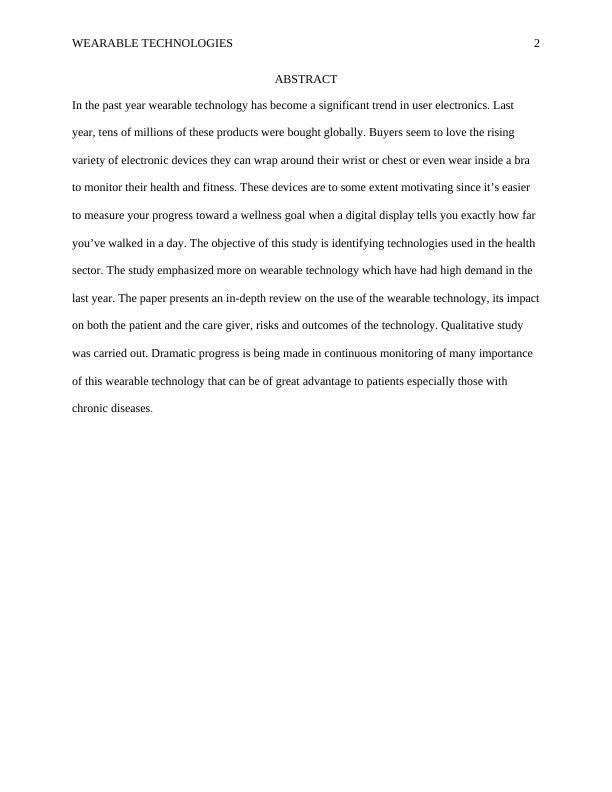Wearable Technologies: Impact on Patients and Healthcare Providers
This paper reviews the recent advancements in wearable sensors for continuous medical monitoring, real-time physical activity assessment, baby monitoring, and industrial applications. It discusses the progress being made in continuous monitoring of critical medical conditions and the benefits of wearable devices in providing better medical care. The paper also highlights the broader applications of wearable technology in the medical field, such as glucose level monitoring, cardiac arrhythmia detection, and urinary tract infection testing. It emphasizes the potential of wearable technology to improve health monitoring and fitness monitoring through flexible and conformal electronic devices. The impact of wearable technology on psychosocial factors of osteoarthritis management is also explored. The paper concludes by discussing the application of wearable technology in surgery and the opportunities and risks it presents in medical settings.
Added on 2023-06-11
About This Document
Wearable Technologies: Impact on Patients and Healthcare Providers
This paper reviews the recent advancements in wearable sensors for continuous medical monitoring, real-time physical activity assessment, baby monitoring, and industrial applications. It discusses the progress being made in continuous monitoring of critical medical conditions and the benefits of wearable devices in providing better medical care. The paper also highlights the broader applications of wearable technology in the medical field, such as glucose level monitoring, cardiac arrhythmia detection, and urinary tract infection testing. It emphasizes the potential of wearable technology to improve health monitoring and fitness monitoring through flexible and conformal electronic devices. The impact of wearable technology on psychosocial factors of osteoarthritis management is also explored. The paper concludes by discussing the application of wearable technology in surgery and the opportunities and risks it presents in medical settings.
Added on 2023-06-11
End of preview
Want to access all the pages? Upload your documents or become a member.



